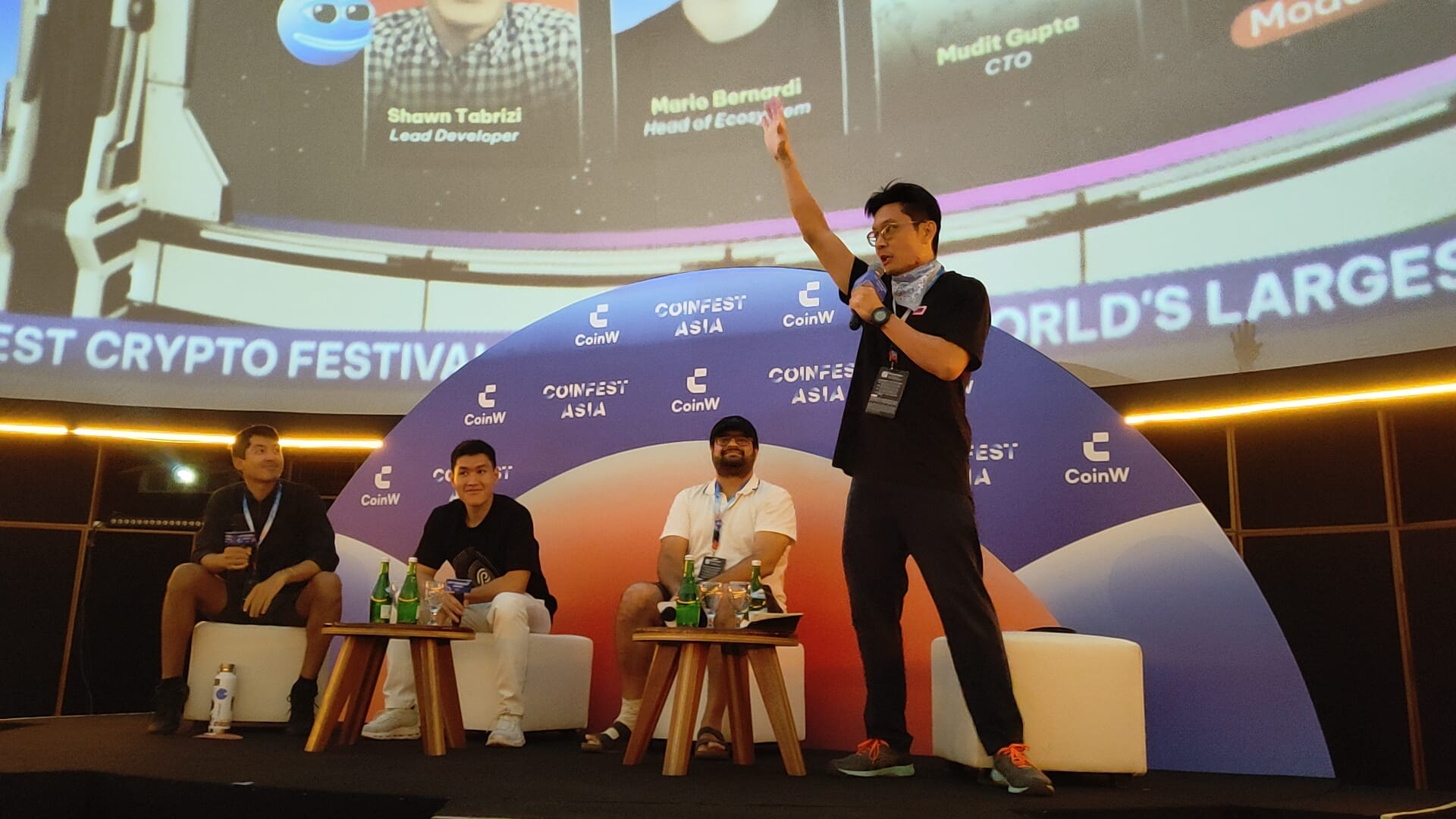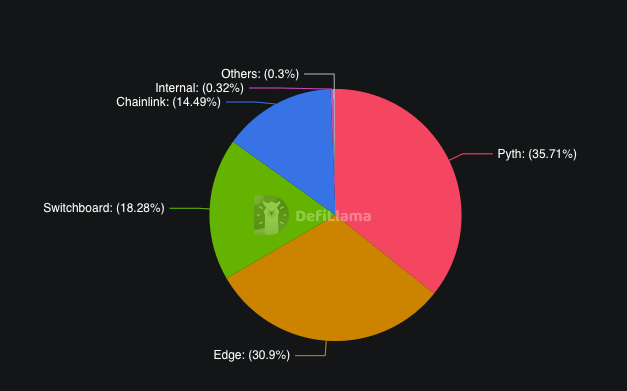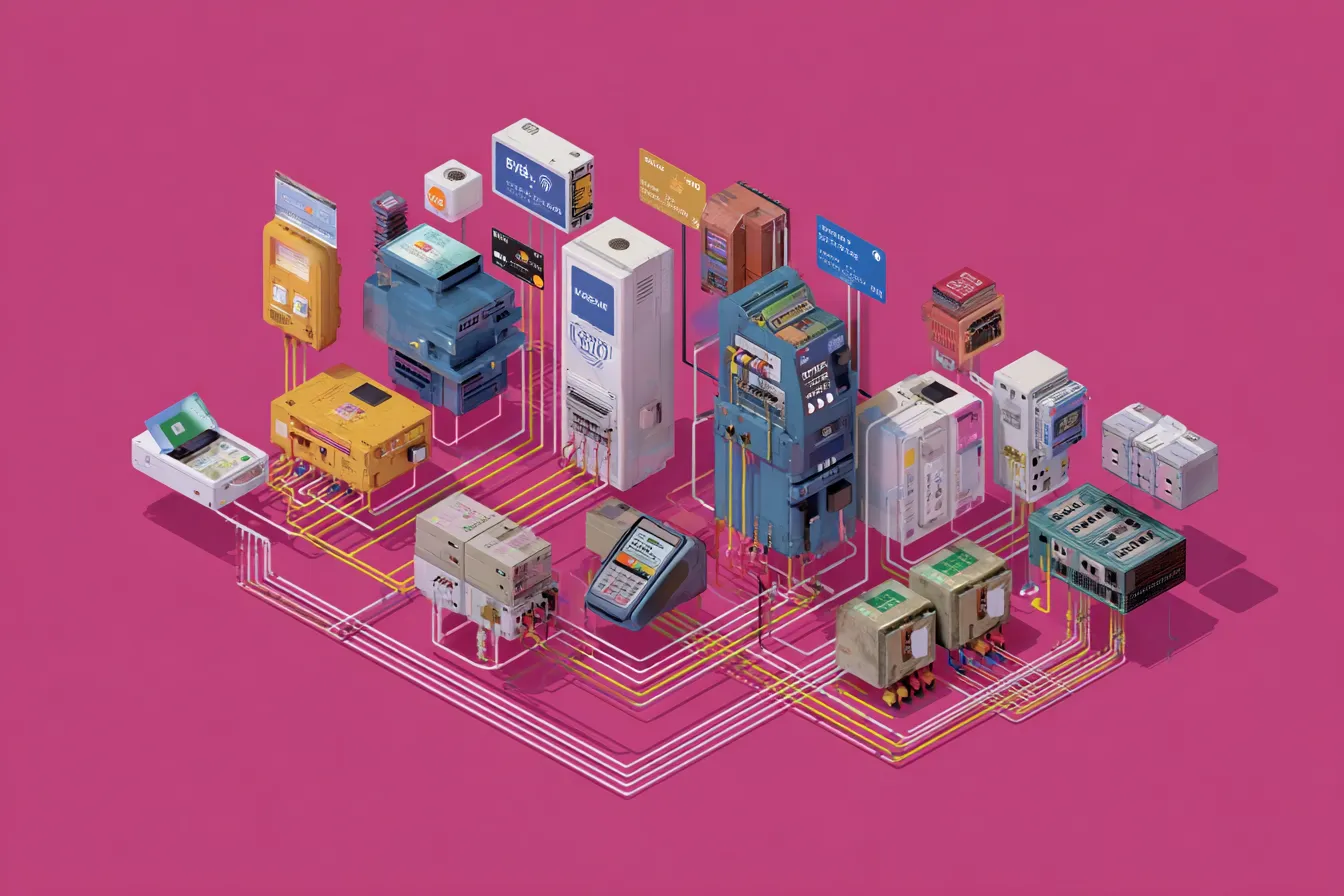Decentralisation, Speed, or Safety: What Should Blockchains Optimise For?



What defines the ideal blockchain in 2025? Is it decentralisation? Security? Scalability? Or is it something less tangible like interoperability, developer education, or user trust?
At Coinfest Asia 2025, held last week in Bali, Indonesia, I had the chance to moderate a panel with three of the sharpest minds in the blockchain space:
- Shawn Tabrizi , lead developer at Polkadot ,
- Mario Bernadi , head of ecosystem at Pyth Network ,
- Mudit Gupta , CTO at Polygon Labs
Our conversation ranged from shared security to real-world applications, from oracle latency to zero-knowledge proofs.
But first, some background for those of our readers who aren't up to speed with Polkadot, Pyth Network, and Polygon's latest developments.
The State of Play: What Are the Chains Focused On?
Polkadot is focused on building a decentralized world computer. What does that mean exactly? They want to provide a decentralized compute infrastructure that allows builders to build any application they need whether it be identity, real world assets, or DePin.
Latest developments includes what Mandala Chain is doing with the Indonesian Government with regards to advancing blockchain adoption.
? Exciting news for Indonesia as we embrace a transformative trade deal between Indonesia and United States!
— Mandala Chain (@MandalaChain) July 24, 2025
This landmark agreement heralds a new era of economic opportunity and growth for our nation. ?????
Key benefits for Indonesia:
✅ Market Expansion: With the…
Another thing I found inspiring is what they are doing on the education front to help onboard new developers into crypto with their Blockchain Academy .
From Shawn Tabrizi (Polkadot) on Education: "We're teaching blockchain fundamentals, not Polkadot evangelism. 70% of our academy content is chain-agnostic because the industry needs builders who understand the technology, not just our ecosystem."
Pyth aims to scale thousands of price feeds for cryptocurrencies, equities, FX, and other financial products.
The vast majority of DeFi services require a blockchain oracle —a secure, reliable method for blockchain applications to obtain financial data from the external world.
Some of the limitations of oracles include latency, asset coverage, and data quality.
Since Pyth Network launched Pythnet on Solana in August 2022, Pythnet today is the most widely used Oracle on the Solana network providing 400ms for each price feed, 80+ price feeds, and 65+ data providers.

The Pyth Network chose to build on Solana because of the network’s demonstrated ability to process thousands of transactions per second with fast finality. Source .
Agglayer by Polygon introduced CDK Enterprise on the last day of Coinfest. A financial-grade blockchain stack designed for banks, fintechs, and RWA issuers. Confidential by default. Designed for traceability and auditability.
I haven't had a chance to dive into the tech yet but they claim it is confidential by default, you can best they are using zero knowledge technology under the hood. And given Mudit's security engineering background and his passion for coding. You can safely assume that Polygon has security at top of mind for the ideal blockchain for enterprises.
These are some of the benefits from a user perspective. Link to FAQ below.

Interoperability, Incentives, and the Multichain Dilemma
I didn't expect our 30-minute session to fly by so quickly. I only had time to ask the panelists only a few of the questions I prepared. Here are some insights from the panel discussion.
After 8 years of Ethereum lessons, why haven't we achieved seamless interoperability yet?
There was agreement between Mudit Gupta and Mario Benardi that while use cases vary, people are generally driven by financial incentives. Everyone wants to launch their own L1 to raise funding. This leads to fragmented liquidity and necessitates bridges to connect liquidity across different chains. This opens up another avenue for security attacks through bridge vulnerabilities , as we've seen repeatedly.
One clear narrative emerged: the future is multichain, making interoperability far more challenging due to different chains having varying requirements, tooling, and security considerations. Since this is our reality, we need to make the most of it.
When asked what architecture they would bet on for the next five years, we reached consensus from panelists Shawn Tabrizi and Mudit Gupta: shared security.
Shawn said the most important architecture will be those that prioritize light clients . His take is they are the ultimate way to have security and verifiability across different apps.
As moderator, this reinforced my belief that shared security is the most critical aspect of blockchain technology—not just security against smart contract bugs, but security between different applications that communicate across chains. Only with shared security can we achieve trustless interoperability.
Here's a snippet of my question to an audience member from Mandala Chain about why they chose to build on Polkadot, plus my reality check question: "What's the one design choice your chain won't compromise on—even if it costs adoption?" You'll hear Shawn jump in with excitement on this one.
No Perfect Chain - Just Better Choices
The ideal blockchain doesn't exist— yet . But if this panel made anything clear, it's that the road to it will be paved with collaboration, not isolation. As Shawn and Mudit pointed out, shared security might be the glue that holds the multichain future together. Meanwhile, projects like Pyth are showing how speed and reliability in oracles are critical for scaling financial use cases.
For developers and founders, the real question might not be which chain to build on, but what trade-offs you're willing to make . When asked what design choice their chain wouldn't compromise on, even at the cost of adoption, the discussion lit up. That moment captured a deeper truth: building a better blockchain isn’t about winning short-term market share, it’s about holding the line on principles that matter. In a space driven by speed and speculation, that kind of intentionality might be the most radical choice of all.
Elsewhere
Blockcast
Yat Siu on the Future of Crypto: AI, Blockchain, and Creativity
In this episode, the chairman and co-founder of Animoca Brands discusses the implications of AI on jobs, the importance of nurturing creativity in education, and the launch of Moca Network, a new blockchain initiative aimed at enhancing digital identity and reputation. Yat emphasized the need for a shift in how we view data ownership and privacy, as well as the role of speculation in the crypto space.
Access the episode from your preferred podcast platform here .
Blockcast is hosted by Head of APAC at Ledger, Takatoshi Shibayama . Previous episodes of Blockcast can be found here , with guests like Kapil Duman (Quranium), Eric van Miltenburg (Ripple), Jeremy Tan (Singapore parliament candidate), Hassan Ahmed (Coinbase), Sota Watanabe (Startale), Nic Young (Oh), Jacob Phillips (Lombard), Chris Yu (SignalPlus), Kathy Zhu (Mezo), Samar Sen (Talos), Jason Choi (Tangent), , Mark Rydon (Aethir), Luca Prosperi (M^0), Charles Hoskinson (Cardano), and Yat Siu (Animoca Brands) on our recent shows.

Ripple, Circle Back Cross-Border Payments Firm Tazapay in Series B Round
Crypto giants join $10B payment processor's expansion as stablecoin-fiat bridges gain institutional ...

Surging ETF Inflows Contrast With On-Chain Fatigue as BTC Reclaims $110K
Your daily access to the back room....

Google Executive Positions Company's Blockchain Against Stripe, Circle Rivals
Web3 strategy head highlights GCUL platform's neutral positioning as competition heats up in enterpr...

